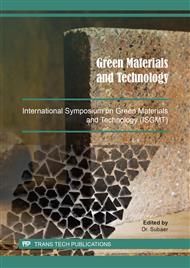p.51
p.59
p.65
p.71
p.83
p.95
p.101
p.107
p.113
Molecular Barcoding Based 16S rRNA Gene of Thermophilic Bacteria from Vulcanic Sites, Linow Lake, Tomohon
Abstract:
Thermophilic bacteria live at temperatures above 450 C. Many investigations focused on their potential as sources of highly active enzymes ‘termostable enzyme’ and other products such as antibiotics and compatible solutes. Lake Linow is an active volcanic lake located in Tomohon City, North Sulawesi, Indonesia. Lake Linow becomes the habitat of thermophilic bacteria. A study has been conducted to obtain isolates of thermophilic bacteria and to identifikasi berdasarkan gen 16 s RNA. Bacterial DNA extraction procedure using the Presto TM Mini gDNA Bacteria Kit Geneaid protocol, with modifications. Amplification of 16s RNA gene using PCR method. Visualization of 16 s RNA amplicon genes with automatic electrophoresis capiler Qiaxel, Qiagen. Sequencing was carried out using Singapore's First BASE Sequencing service. The results showed that IL2 isolates and IL3 isolates could live up to 700C. Alignment analysis results using NCAST BLBI IL2 isolates showed 99% similarity with Bacillus thuringiensis strain H2682 (accession number CP009720.1). While isolate of IL3 thermophilic bacteria showed 94% similarity with Bacillus licheniformis strain 14DA11 (accession number CP023168.1). The results of phylogeny reconstruction with neighbor joining method, gene sequence 16S rRNA isolate IL2 showed the closest relation with Bacillus thuringiensis strain HD1011 (accession number CP009335.1). While IL3 isolate showed the closest relation with Bacillus licheniformis strain 14DA11 (accession number CP023168.1).
Info:
Periodical:
Pages:
83-92
Citation:
Online since:
August 2019
Keywords:
Price:
Сopyright:
© 2019 Trans Tech Publications Ltd. All Rights Reserved
Share:
Citation:


